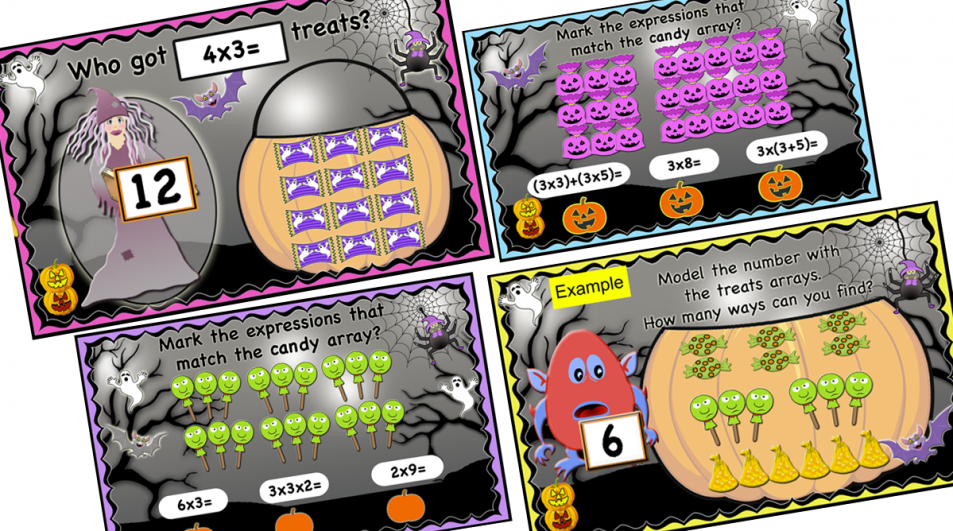Arrays are a great way to introduce multiplication in grade 1, 2 and 3. Playing with arrays will help students model multiplication as repeated addition and understand the properties of multiplication. It is very important that we help students visualize and understand multiplication early on so that we build a strong foundation to support the learning of division, fractions and so much more.
Students need to make connections that will help them gain automaticity with multiplication and division facts. These connections come through a deep understanding of the concept and the properties of multiplication.
When we start with multiplication we follow these steps
- Multiplication as repeated addition (use arrays and area models so that the students will grasp the concept of multiplication)
- Practise the commutative property of multiplication which says that it doesn’t matter in what order you multiply numbers.
- Practise the associative property of multiplication according to which the grouping of the numbers does not matter when multiplying a series of values together. For example(5×4)x2= 5x(4×2)
- Practise the associative property of multiplication according to which the grouping of the numbers does not matter when multiplying a series of values together. For example(5×4)x2= 5x(4×2)
- Practice the distributive property of multiplication according to which multiplying the sum of two or more numbers by a number will give the same result as multiplying each addend individually by the number and then adding the products together.
These fun Halloween digital activities (google slides) allow students to drag and drop candy as well as different Halloween characters to solve the problems understand multiplication and its properties and start with multiplication facts. 85 slides are included in this resource. 4 types/levels of activities from starting with the concept of multiplication as repeated addition to practicing basic multiplication facts.
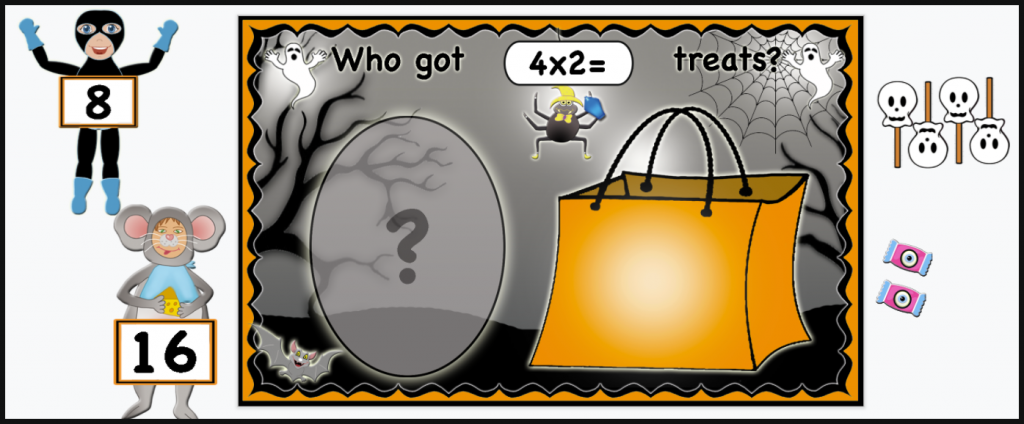
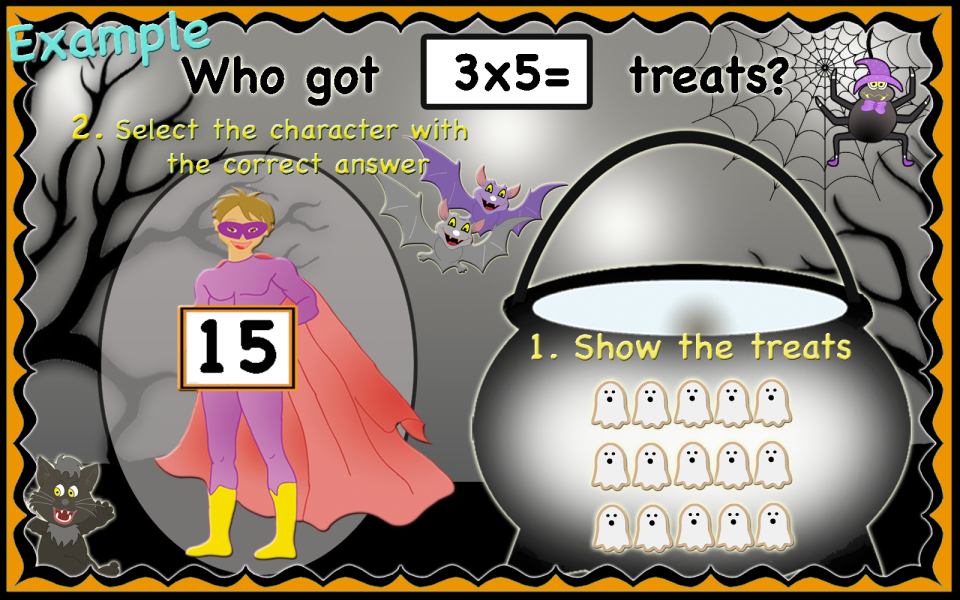
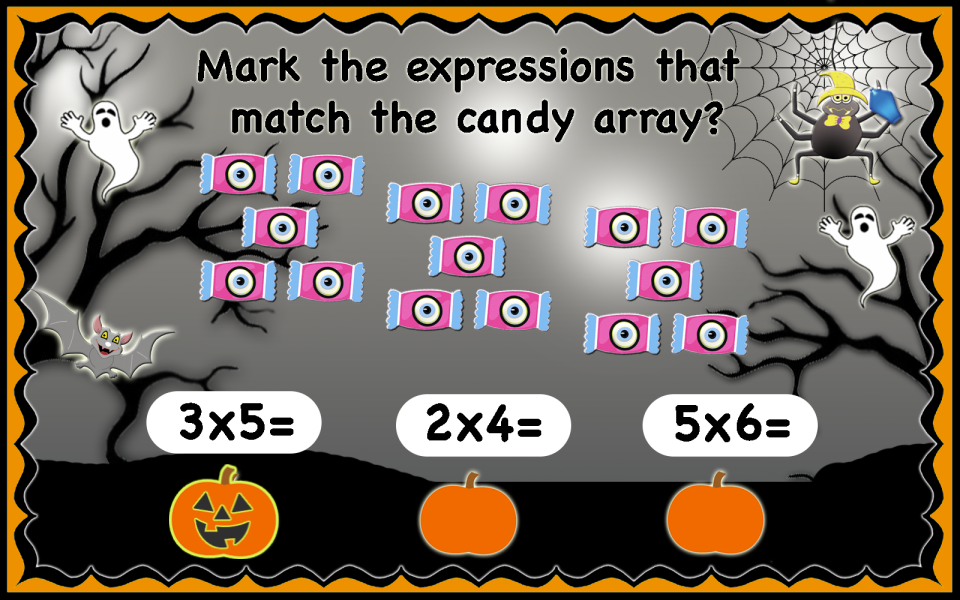
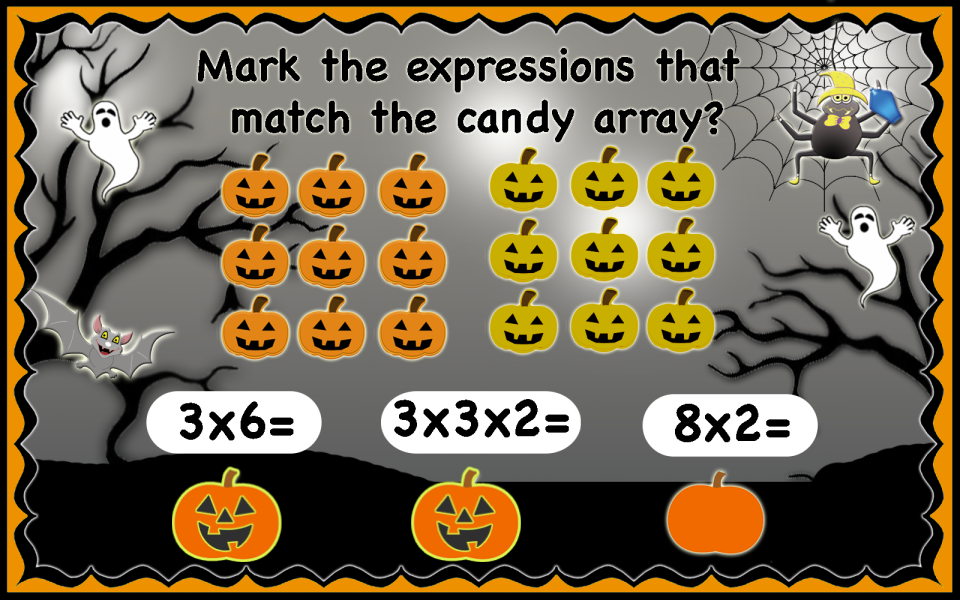
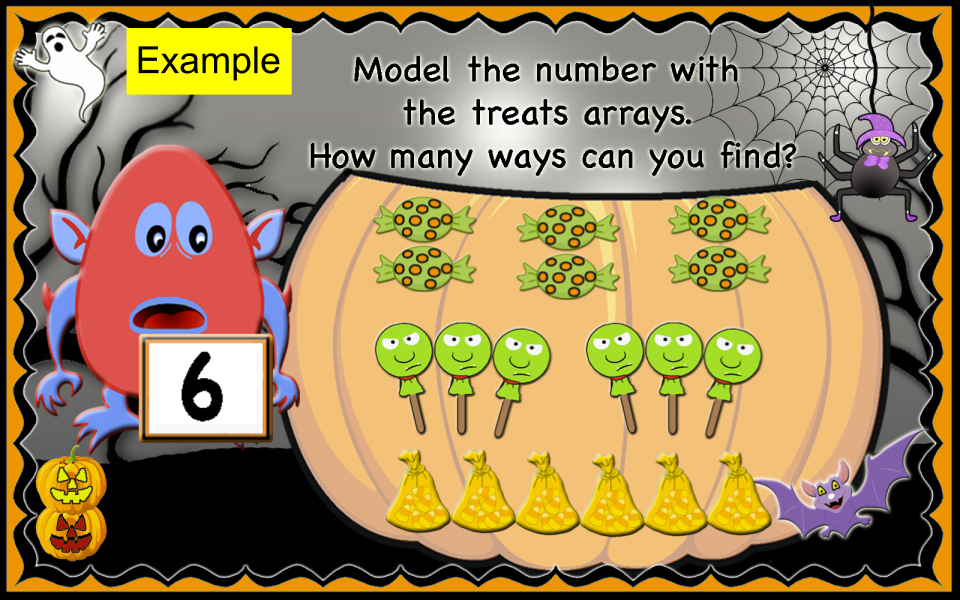
There are multiple levels of activities.
The students can
- start by creating arrays based on given expressions.
- solve problems after creating arrays for the given expressions.
- create different arrays for a number (starting with basic multiplication facts).
- select the correct expressions for already built arrays. (multiplication properties)
How to use the activity cards
The activity cards can be used as virtual manipulatives, for warm-ups, practice, assessment, centers, homework, and more. My favorite way of using these cards is to initiate discussions and compare different ways/ arrays of representing a number and solving a multiplication problem. The activities are to be used in the edit mode and not the presentation one. Share a copy with the students and they will be able to edit. The drag and drop objects will not show in the presentation mode but you can complete the slides and show them as examples.
Find a free and a premium version below.
The premium version includes 85 slides. Forming arrays to understand multiplication, multiplication properties and modeling numbers/ multiplication facts.
Find more Halloween activities below.


